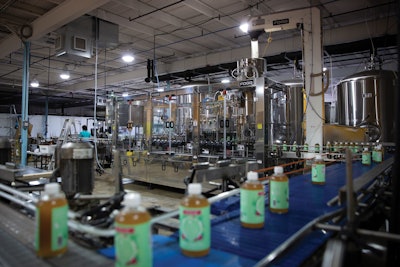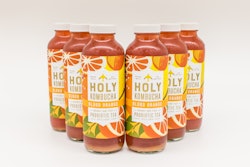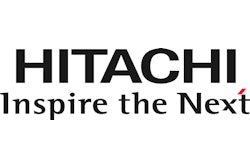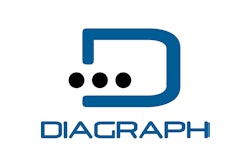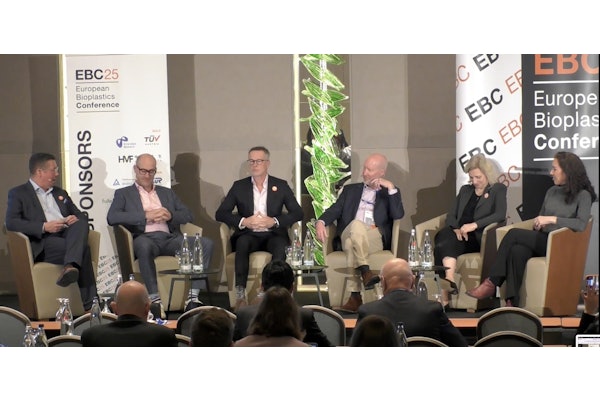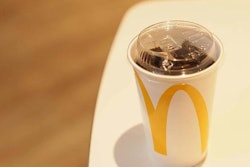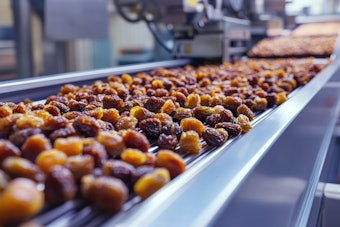A fermented, carbonated tea known for containing probiotics and a hint of alcohol, kombucha is the latest natural health and wellness-oriented product to migrate from the periphery of homebrewers and hobbyists to mainstream retail shelves and foodservice display cases. Natural and wellness retail product tracker SPINS reports that the category has grown between 30% and 40% per year for the past five years.
Husband and wife team Austin Sherman and Alexis Korman, founders and owners of Big Easy Bucha in New Orleans, can personally testify to this mainstreaming trend. Sherman had been a homebrewer and recipe tinkerer himself until Korman recognized that his skills were ready for the big time. The pair launched Big Easy Bucha in 2014, established a brand identity, developed varieties distinct from the prolific West Coast kombucha scene, and rode the trend’s meteoric rise into the limelight.
“But anecdotally, we find that not many people have heard of it yet, even though it’s approaching a billion-dollar market,” Sherman says. “Think about craft beer at its inception 20 years ago; that’s where kombucha is now. It’s at an intersection of people wanting a carbonated option, people interested in probiotic gut health, and people looking for an alcohol replacer that can be consumed during the week without guilt.”
Big Easy Buch can be found at retailers throughout the South and East, including Publix, Whole Foods, Rouses Supermarkets, Central Market, and many more. But as the company’s reach grows, so too does its need for packaging automation.
Leapfrog forward with a filler
Big Easy Bucha has slowly automated its packaging operations by following that piecemeal pathway—long the hallmark of growing craft breweries. Line speeds crept upward over time, even vaulted forward with a Combi Packaging Systems case erector and pack station. But Sherman hit a roadblock of about 30 bottles/min—a speed limit imposed by the company’s entry-level, modified time gravity filler that could only handle low volumes of CO2.
But by the time he’d hit that upper bound, distribution had also hit 1,300 retail outlets across 13 states and was only growing. Something had to give. So Sherman again sought new equipment, in this case a counter-pressure filler to improve throughput volume and carbonation content. And this time, he wanted to make a purchase that would allow him to bypass a few incremental upgrades. Skipping a few steps, he landed on a high-capacity Fogg monobloc rotary rinser, filler, and capper.
“We really tried to future-proof it as much as possible by aiming higher than what we needed at the moment,” he says. “We wanted something we could grow into and add on additional fillers in the future. Now with the Fogg filler, we’re able to do about 600-percent more volume with the same amount of time in man-hours. Our speeds have already more than doubled. Plus, we’ve been able to streamline our fill levels, so our consistency has improved. I think based on that, we’ve seen about a 30-percent increase in sell-through at the store level. We’ve really grown up as a brand.”
Tiny bubbles
As a counter-pressure filler, the Fogg removes the oxygen from the bottle, replaces it with CO2, equalizes the pressure from the bright tank (or pressure vessel), then gravity fills and caps the bottle immediately thereafter. Being able to fill under pressure gave Sherman the green light to carbonate at higher volumes than he was before.
“We were able to go as high as 2.5 volumes of carbon dioxide before, which is the equivalent of a lightly carbonated soda,” Sherman says. “Now we’re able to go as high as we want, but we generally aim for between 2.7 and 2.8 volumes.”
And without any oxygen left in the bottle, shelf life is extended, permitting greater reach into new markets at greater distances.
Current packaging line
Bottles are manually depalletized from bulk glass pallets with corrugated layer dividers. In anticipation of the new filler, a previous rotary-style accumulation table was replaced by a uni-directional feed accumulation table. While the process is manual, the feed table is large enough to handle more than a layer at a time, so it’s a matter of sliding each bulk glass layer onto the accumulation table instead of hand-picking and placing.
Glass is conveyed to a Chicago Automated Labeling labeler for pressure-sensitive labeling. Before the new filler was installed, this labeler was positioned post-fill. It was moved to the front of the line to avoid downtime associated with changing over labels at the speed the Fogg is now running. Because the new filler is a counter-pressure system, it unfavorably warms up if the line is forced to go down due to downstream errors. An upstream labeler, and upstream label changeover, removes that variable.
The new Fogg monobloc has a 30-valve rinser with 36 filling valves and a six-head rotary capper. It can operate at speeds to 150 bottles/min of 16-oz glass bottles, but Big Easy Bucha is currently running at a comfortable 80 bottles/min as it grows into the machine.
“We could certainly go a little faster, but this is still new for us. Every week we go up a couple of bottles per minute, though, as we learn the machine,” Sherman says.
The monobloc cabinet contains a bulk cap elevator to carry the caps into the centrifugal sorter and hopper to cap the bottles. The system also uses a rinse recovery skid to recover the rinse water and reuse.
“After the monobloc, we added another 50 feet of conveyor just to handle overflow because the speeds increased so much,” Sherman says. “We also added a large bi-directional accumulation table to add some slack to the line in case of a problem downstream.”
Exiting the monobloc, bottles are conveyed to a Hitachi ink-jet printer, which codes each cap with a batch number and expiration date.
A Combi case erector with bottom sealer delivers bottom-sealed cases to an adjacent Combi Ergopack manual pack station. As the name implies, the pack station has the ergonomic benefit of delivering erected cases to the operator’s waist, while the bottles are conveyed just below shoulder level to ease hand-packing motion. Cases are then automatically top-sealed down the line.
A Diagraph print-and-apply front and side-wrap labeler handles the date code, batch number, and barcode on the corrugated six-pack master shipper. They are then hand-palletized and carted off via Toyota electric pallet jack to a Cousins Packaging Switch automatic stretch wrapper.
Package formats
Big Easy Bucha’s seven SKUs are packed most commonly in a 16-oz glass bottle with a white, 26-mm tamper-evident plastic cap from TricorBraun. The bottle carries a single, 4 x 8-in. p-s biaxially oriented polypropylene label with a matte lamination finish for waterproofing. The 12-in. rollstock is supplied by DWS Printing. Labels are four-color flexo-printed.
A six-pack corrugated carton master shipper case, as opposed to a 12-pack, is palletized and sent to retailers, who mix and match individual bottles of SKUs for shelf or refrigerator display.
“It’s just nice for them to be able to mix varieties and not have to commit to 12 bottles per SKU,” Sherman says. “We’re sending them product daily, so if they don’t have to stock 12 bottles of each SKU, that gives them a little bit more flexibility, plus a little bit more storage room.”
The company also offers a 67-oz growler format that conveniently can run on the same line, using the same labeling, filling, coding, marking, and conveying equipment, with limited changeparts. Finally, kegs are available for the foodservice market. Of the kombucha produced, 85% is packaged in 16-oz bottles, 15% in growlers, and 5% in kegs.
What’s next
Looking into his crystal ball, Sherman says consumer formats beyond single-serve or grab-and-go are top-of-mind.
“We are working on a variety pack sold in a retail box that our retail partners can wholesale,” he says. “We’re doing two versions; each will have two bottles of three of our seven SKUs, pairing similar flavor profiles from one end of our spectrum to the other. Plus, we can do this without needing to add any changeparts to our current case erector and pack station.”
When it comes to equipment upgrades, all packaging engineers know that food and beverage lines are only as fast as the slowest process on them. Now that the monobloc is in at Big Easy Bucha, the practice of manual case packing becomes the weakest link.
“We can retrofit our Combi pack station to be an automatic packer, and we’re working with their sales engineer to work that into the line. With that in place, the operator man-hours can be shifted to palletizing, and we will be able to run at up to 120 or 130 bottles per minute with ease.”
Sometimes better lucky than good
The new Fogg monobloc necessitated additional conveyors and accumulation tables to handle the speed increase. Sherman even got a quote for $150,000 worth of equipment.
In a stroke of luck, he found what he was looking for at a bakery equipment auction halfway across the country. What was likely six figures when new, he got with a winning bid of—get this, this is not a misprint—$310.
“I guess nobody was paying attention to the auction. The equipment took some retrofitting, but the conveyor system was otherwise in brand new condition. It’s just nice to have a welder on the payroll,” he says.
Redesign rationale
Big Easy Bucha launched a redesigned label and improved logo (shown) in June, 2018 dreamed up by TILT, an award-winning design studio in Baton Rouge, LA. The New Orleans-based kombucha brewery’s new branding is both eye catching and easier to read for consumers at shelf level, while maintaining its uniquely Southern identity and Caribbean color scheme.
Flavor innovations include Front Porch Peach, made with Southern-sourced peaches and magnolia blossom, and Parade Punch, infused with pear and jasmine. The company is also debuting Lil’ Easy Kombucha Shots in Publix stores this summer, a first-to-market kombucha shot in a fun and festive 4-oz format, comprised of concentrated kombucha and fruits, roots, and spices. pw
Report: Some premium teas and juices need co-packers
The interest in organic and natural ingredients is rapidly increasing and not expected to decline, according to Beverage Trends in Packaging and Processing Operations by PMMI Business Intelligence.
Tea represents one example of the natural and healthy trend, and while tea made from actual tea leaves is more desirable than concentrate, it requires new equipment and processes that some large beverage companies can’t accommodate due to space constraints. Much of the new beverage tea production is given to co-packers that are building not only new lines, but entire new facilities to handle this volume.
A production manager at a large CSD beverage company who participated in the study says, “The trend toward tea is big. We are working with co-packers to build three new facilities across the country to make our tea. Tea extraction is a complicated process, and we are investing significantly into Kneader tea processing equipment.”
Juices that have gone through high-pressure processing (HPP) are also expected to be increasingly popular. HPP is a key technology that beverage companies use to provide juices and other beverages without having to undergo pasteurization. Pasteurization is said to have a detrimental effect on both taste and nutrition, while HPP keeps them both intact. Learn more about both HPP and the Cold Pressure Council, convened by PMMI, at http://coldpressurecouncil.org.
While many small and large beverage manufacturers are racing to expand premium tea sales, the movement into HPP juices by larger beverage companies is met with more caution due to the higher cost of the pressurizing equipment, so large companies often enter this market by making investments into smaller companies.
According to the report, one commercialization manager at a large CSD beverage company says, “HPP will be really big. Starbucks does this with Evolution Fresh. These premium products will get a lot of traction, but not many people are doing this. We don’t do this yet as HPP requires too much investment in capital equipment. We cannot use our traditional infrastructure with this. So, we bought a minority stake in a smaller juice company and we provide distribution for them just so we can be in the market.”
For more details about beverage trends and growth, download the free Executive Summary, or the full report at pwgo.to/3547. —Kim Overstreet
